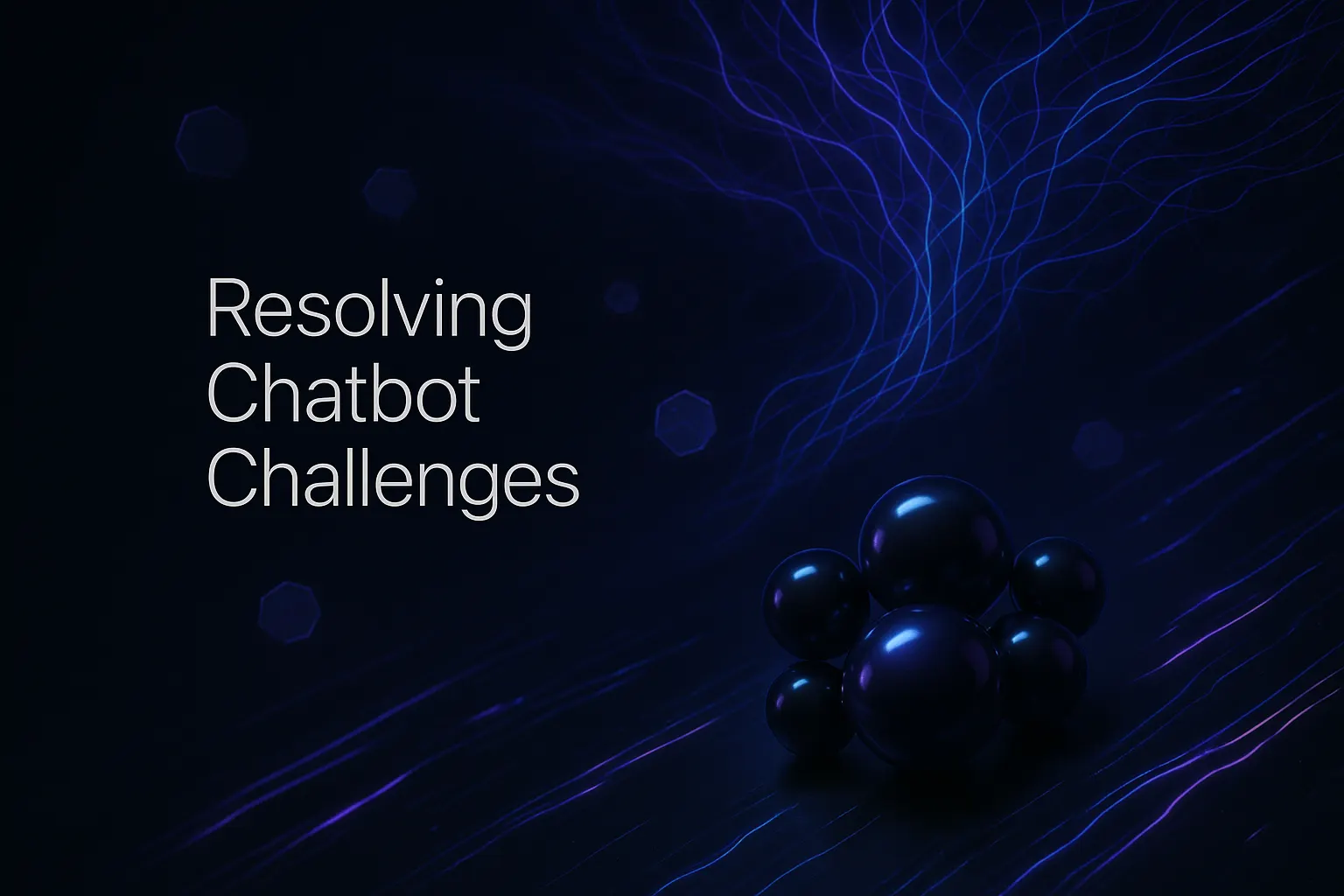Your bot stalls, tickets pile up? Start with this two‑minute triage
- Confirm the scope of the issue. Is it affecting one channel, or multiple channels?
- Check whether the bot is published, not just saved.
- Test in an incognito window to rule out cache-related issues.
- Review status pages for regional outages.
- Switch to a sandbox environment and try to replicate the issue.
- Capture a fresh conversation ID and corresponding timestamp.
- Export logs before making any changes.
Eight common issues and their solutions
1) The bot does not respond
When your bot is silent, it’s likely not receiving vital events. Try these steps:
- Ensure the widget or messaging SDK loads correctly on your page.
- Temporarily disable ad blockers or privacy extensions during testing.
- Verify channel credentials for platforms like WhatsApp, Facebook, or SMS.
- Publish the most recent flow to the appropriate brand and channel.
- Check business hours, your flow may be routing users to offline queues.
2) Triggers conflict or never fire
Conflicting or overly broad triggers can cancel each other out. To resolve:
- Arrange triggers by specificity, followed by priority.
- Use clear, distinct conditions and avoid broad contains matches.
- Disable triggers one at a time to pinpoint the issue.
- Log each trigger decision in a dedicated test view.
3) Intent misses and wrong answers
Ambiguous training data leads to confusion. Make your intent sets clear:
- Group user phrases by a single goal instead of broader topics.
- Remove near-duplicate intents that dilute accuracy.
- Include negative examples for off-topic queries.
- Set a confidence threshold and establish a clear fallback response.
- Audit misrouted chats each week for quick fixes.
4) Knowledge base not linked
Your bot can’t share information it can’t access. Improve KB linkage by:
- Checking article permissions and ensuring visibility on each channel.
- Using clear titles, concise summaries, and structured headings.
- Tagging articles with terms your users actually use.
- Breaking up long text blocks with steps and bullet points.
- Redirecting deleted articles to relevant, up-to-date alternatives.
5) Handoff stalls or loops
Routing issues often stem from faulty group configurations or logic.
- Verify the target group exists and has at least one online agent.
- Check that routing keys are correctly mapped to your flow variables.
- Provide users a manual option, like “Talk to a human”.
- Attach conversation transcripts so agents get full context instantly.
- Set handoff timeouts and automatically escalate if the wait is too long.
6) Channel setup breaks on web or messaging apps
Front-end misconfigurations can block smooth setup. To troubleshoot:
- Place the widget script at the end of the
<body>tag. - Add required script domains to your Content Security Policy (CSP).
- Enable third-party cookies if your bot’s flow needs them.
- Test mobile web on both Safari and Chrome.
- Ensure WhatsApp templates are properly approved.
7) API and webhook calls fail
API and webhook failures usually fit three patterns. Check quickly for:
- Authentication: Rotate keys, check permission scopes, and restrict IP access.
- Timeouts: Keep response times short and send valid JSON promptly.
- Format: Validate request payloads and sanitize user input fields.
- Log all HTTP codes, keep an eye out for 401, 403, 404, 429, and 5xx errors.
- Implement retries with jitter and circuit breaking to avoid repeated failures.
8) Language and locale mismatch
Ensure language consistency for a clear user experience:
- Set a default language for each channel.
- Detect and store the user’s language early in the session.
- Localize all quick replies and validation prompts.
- If no translation is available, fall back to English, and notify users politely.
Fixes that improve reliability this week
- Limit each bot flow to a single goal; split overly complex trees.
- Use succinct prompts and replies; avoid lengthy paragraphs.
- Add analytics events at every decision point to monitor performance.
- Sample five failed chats each day and tag the root cause.
- Release small, incremental changes; monitor before proceeding with the next fix.
When to redesign your bot flows
If you notice recurring problems, your bot’s structure may be to blame. Restart with well-defined goals, focused intent data, and a simple fallback system. For complete rebuilds, leverage a modular design and automate your testing process.
For a step-by-step guide, check out how to build an AI support agent with n8n. The strategies can be adapted for Zendesk setups.
Smart add‑ons when Zendesk needs help
Sometimes you do not need a new bot. You need stronger drafting, faster replies, or targeted automation to complement the bot. These tools can enhance your existing setup:
Ada. A powerful automation platform designed to integrate directly with Zendesk. Ideal for structured flows, deflection, and multilingual scenarios.
Typewise. An AI writing assistant for customer service that sits inside your CRM, email, and chat tools. Typewise corrects grammar and style, maintains tone, and drafts polished, brand-ready replies. It respects privacy requirements and aligns seamlessly with enterprise workflows.
Ultimate. Automation and intelligent routing tailored for Zendesk teams. Particularly strong for intent-based routing and smooth agent handovers.
Forethought. Provides agent assist and advanced search across knowledge sources, especially beneficial for complex issue resolution.
Choose the solution that addresses your main gap, better answers, quicker drafting, or more dependable routing.
A simple bot health checklist
- Uptime: Monitor response rates per channel on a daily basis.
- Latency: Aim to keep first responses under a few seconds.
- Containment: Track how many chats resolve without agent handoff.
- Escalation quality: Review agent CSAT scores after chatbot escalation.
- Content freshness: Review and update your top ten intents monthly.
Troubleshooting template for your next incident
Copy and use this structure for incident management. For each point, add relevant details to ensure clarity and actionability across your team:
- Summary: Briefly explain what failed, when it occurred, and on which channel(s) or environments.
- Impact: List specific channels and user groups affected so stakeholders understand the scope.
- Timeline: Document key events with timestamps for accurate incident tracking.
- Root cause: Explain both technical and process-related factors that contributed to the failure.
- Fix: State the corrective action taken and assign an owner responsible for the change.
- Follow-ups: Outline any residual tasks that remain, complete with assigned owners and due dates.
Prevent issues before they hit customers
- Write and run automated tests for your most critical flows on every deployment.
- Gradually roll out changes by gating them to a limited set of users.
- Document guidelines for tone, compliance, and responsible data usage.
- Give agents a one-click option to switch to canned replies if needed.
- Hold weekly reviews to deprecate or archive outdated flows and content.
FAQ
Why is my Zendesk bot silent and not responding to users?
Your bot may not be receiving essential events due to misconfigured widgets or blocked SDKs. Verify channel credentials and ensure the bot is published on the correct channel to avoid routing users to offline queues.
What causes my triggers in Zendesk to conflict or not fire?
Triggers that are too broad or conflicting cancel each other out. Arrange them by specificity and priority, and disable them incrementally to identify the problematic trigger.
How can I fix intent recognition issues with my bot?
Intent misses occur when training data is too ambiguous. Focus on clear, singular goals for each intent set, and audit routing mistakes weekly for immediate improvements.
Why isn't my bot linking to my knowledge base (KB) properly?
Failing to link correctly to your knowledge base often results from improper permissions and poor content organization. Ensure articles are tagged with user-friendly terms and redirected properly to maintain relevance.
What steps should I take if the bot handoff process is flawed?
Bot handoff issues often arise from faulty group configurations. Verify group existence, ensure online agents are available, and incorporate a manual option for users to talk to a human smoothly.
Why are my API and webhook calls failing in Zendesk?
Authentication errors, timeouts, and incorrect formats commonly lead to failed API and webhook calls. Rotate keys regularly, keep response times brief, and sanitize input fields to prevent echoes of failure.
How do language mismatches affect bot performance?
Inconsistent language settings confuse users and diminish trust. Set default languages per channel, track user preferences early, and only default to English if localization is unavailable.
When should I consider redesigning my bot flows completely?
Repeated issues signal a flawed structure in your bot's design. Restarting with clear objectives, focused intents, and automated tests may be more effective than accumulating patchwork fixes.
What tools can enhance my existing Zendesk bot?
Sometimes upgrades come from outside integrations. Platforms like Ada, Typewise, or Forethought can introduce automation or writing enhancements to bolster existing setups more effectively than rebuilding from scratch.
How can I ensure my Zendesk bot remains reliable?
Reliability hinges on proactive management: roll out incremental changes, monitor analytics deeply, and routinely deprecate obsolete content. A bot’s success is not static; it demands ongoing scrutiny and adaptation.


![[2026 Update] Best Canned Responses for Customer Support (Copy & Paste)](https://cdn.prod.website-files.com/6808ed5445a2321fbfcc156c/6932980e9debe1f6dc59a4d4_image_xnm0at.webp)


